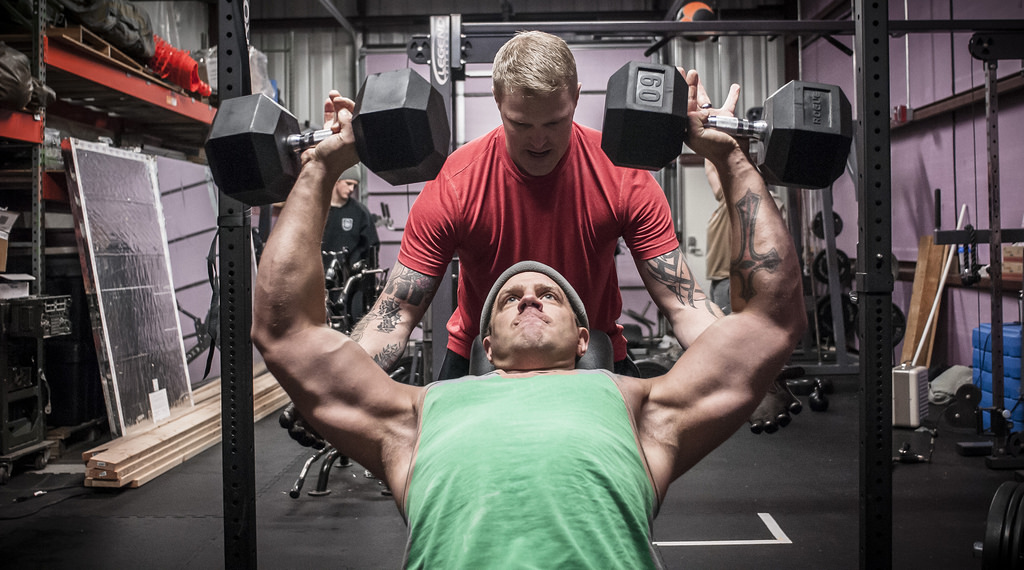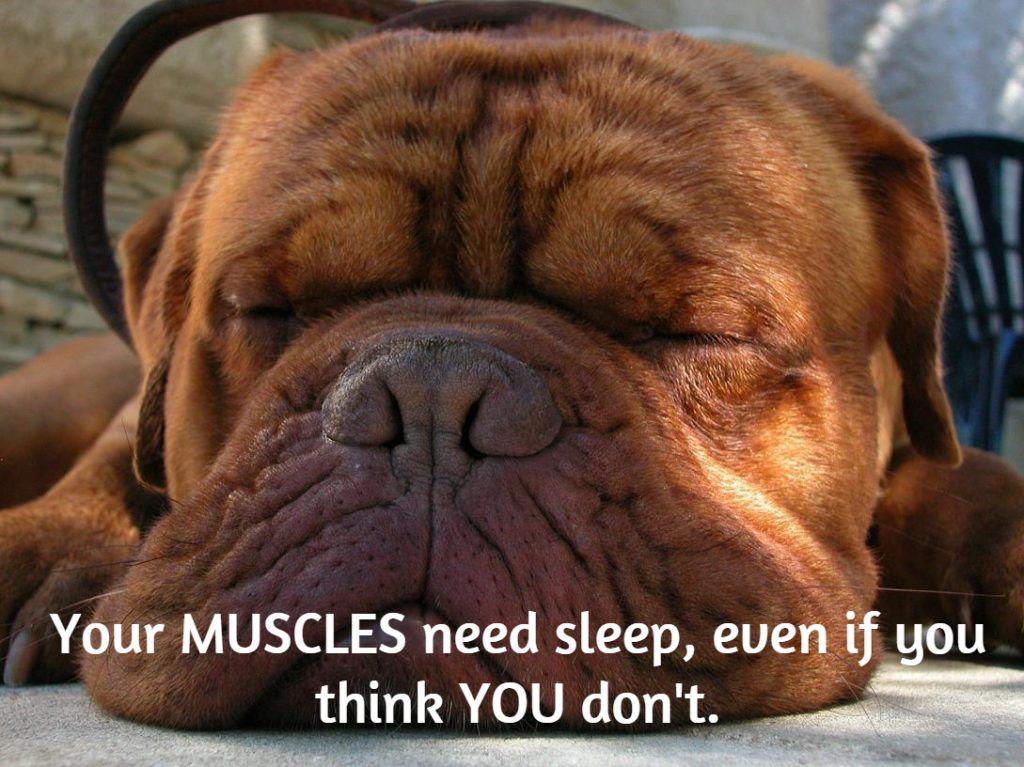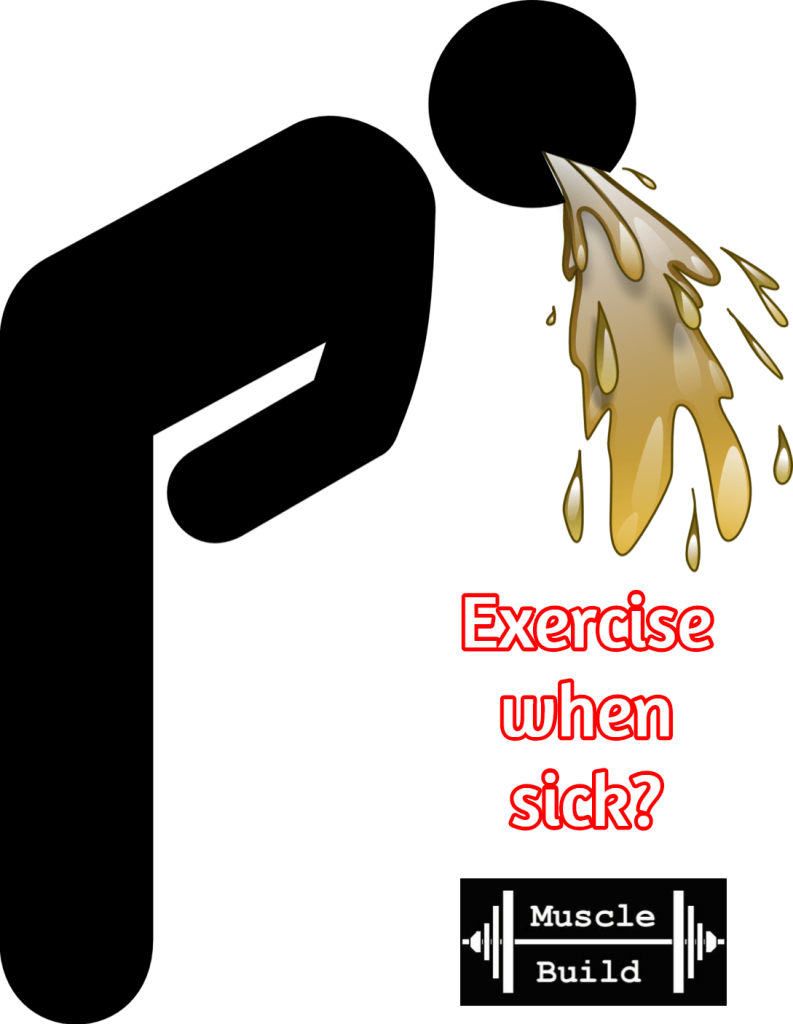Delayed Onset Muscle Soreness

Delayed Onset Muscle Soreness (DOMS) is part of the iron game. But how do you manage DOMS? Here's how.
Anybody who's ever worked out with weights or experienced gravity knows about muscle soreness.
But did you know? There are 3 types of muscle pain.
Today, we talk about one of them: Delayed Onset Muscle Soreness, or “DOMS.”
I thought I'd already written some material about this but after searching the archives, I hadn't. So here's an article that's long overdue. Apologies!
3 Types of Muscle Pain
- Acute muscle pain or soreness
- Injury
- DOMS
The first one is simply the pain you feel when you exercise a muscle. Some attribute the pain to lactic acid build up. But it's that pain you feel when you do a fair- to high number of reps. The muscle aches during the last few reps as well as a few minutes (sometimes even hours) afterward.
The second kind of muscle pain is actual injury. I don't think I need to describe it to you. It's one of those things: You know it when you feel it.
Sometimes it's even accompanied by noise. When I injured my elbow years ago, I heard, “POP POP POP POP,” along with a LOT of searing pain. I knew immediately that this wasn't good.
However, a few trips to the chiro, rest, and some therapy got me back to the gym.
What is DOMS?
Delayed Onset Muscle Soreness is a different beast altogether. You usually don't experience it with every workout, nor do you experience it immediately after working out. It usually takes at least 12 hours to appear. Sometimes, you may not feel sore after an especially hard workout until 48 or even 72 hours later (IMHO, that's when it's really bad).
There are differing opinions on why delayed soreness sets in. Some think it's due to the aforementioned lactic acid build up that causes pain during an exercise. Others think that it's the metabolites that accrue due to the lactic acid buildup. Either way, it happens.
But more prevalent is the opinion that it's actually caused by the eccentric part of an exercise. This is what we call the “negative,” or lowering of the bar.
Exercise physiologists don't really fully understand why DOMS sets in, but we know it when we feel it.
And most of the time, it's glorious.
Yes, that's right – I love it when I'm sore after a workout. I know I had a good workout.
Now, it's sometimes difficult to move after DOMS sets in, especially after an intense leg workout.
But the worst really is the core.
Think about it: You can't sit, stand, or lie down (and then get up) without using your core. It's the worst when DOMS is really hitting you hard.
Which brings up…
How do you relieve DOMS? How do you get rid of it or lessen it?
That's the real question, right?
We know we had a great workout if we get DOMS. But how do you get past the pain and get through your day, much less work out later?
There are a few things that help. I'll share them below in no particular order. (You may be asking why? Which ONE below is most effective? I can't give you an answer. Even for myself, different therapies work to varying degrees each time out. So what do I do? All of them.)
- Alternating hot and cold therapy. Take a hot shower for 2-3 minutes, then turn the hot water down as far as you can stand it and shower for 1-2 minutes. Alternate 3-5 times. Concentrate the shower head on the sore muscles. If your chest is sore, concentrate the water there; if it's your legs, focus the stream on them.
Use the water massage feature of the shower head, if available. Which leads to the next two: - Get a massage. Hell yeah, it will hurt. But a good gentle massage will do wonders for DOMS. Don't get a deep massage unless you're a masochist.
- Foam roll
. I hate this, probably because it hurts so damned much. And I think sometimes I feel better afterwards just because I stopped. It's like banging your head with a hammer – it feels so good when you quit. But, like a massage, it does seem to work.
- Take a hot bath, loaded with epsom salts. This is one of those “home remedies” that actually works. Very well. Finish off, though, with a cold shower. You can get epsom salts almost anywhere. I get mine here
.
- Do a light workout using the same muscle. I mean really light. Don't do a lot of reps, either. If your legs are sore, just do a few squats with the bar or even bodyweight – just get the blood pumping. That really seems to be the key – increased blood flow. The theory being that there's damage in the muscles (not an injury, mind you) and the blood carries out the toxins and carries in the nutrients that repair the muscles.
- Last, try citrulline malate. I use this every day. What I've found is that it cuts way down on DOMS (so I don't get it in the first place).
You will find that as you progress, you will experience DOMS less and less. You'll only get it when you vary your workouts so much that your muscles are caught a little off-guard.
Below is a video from Lee Hayward about DOMS and how to help reduce it once you've got it.
Sleep Is Critical to Muscle Recovery
Who knew?
It turns out that good, sound, uninterrupted sleep is critical to muscle recovery. Hmm. I would have never guessed that sleep mattered at all to muscle-building.
All kidding aside, take a look at this abstract from the US National Library of Medicine National Institutes of Health
Sleep is essential for the cellular, organic and systemic functions of an organism, with its absence being potentially harmful to health and changing feeding behavior, glucose regulation, blood pressure, cognitive processes and some hormonal axes. Among the hormonal changes, there is an increase in cortisol (humans) and corticosterone (rats) secretion, and a reduction in testosterone and Insulin-like Growth Factor 1, favoring the establishment of a highly proteolytic environment. Consequently, we hypothesized that sleep debt decreases the activity of protein synthesis pathways and increases the activity of degradation pathways, favoring the loss of muscle mass and thus hindering muscle recovery after damage induced by exercise, injuries and certain conditions associated with muscle atrophy, such as sarcopenia and cachexia.
5 Reasons Why Your Muscle Building Program Sucks
Building muscle has always been a passion of mine.
The #1 goal of the majority of my clients is to build as much muscle as possible.
If you want to build significant muscle, you need to start taking it seriously. Below are 5 reasons why you're not making the gains you should be making.
1. You wing it.
You need a plan.
Do you think Washington just yelled “Charge!” during the Revolutionary War?
Hell no.
Do you think Tiger won the 2000 US Open by 15 shots by simply “Grippin & Rippin” it?
Hell no.
Do you think Dorian Yates won 6 consecutive Mr. Olympia's without a plan?
Hell no.
So, what makes you think you can build large slabs of muscle without a plan?
You can't.
So pick a muscle-building split and stick with it for the next 3 months.
2. You are focusing too much on isolation exercises.
To get big you need to lift big.
You wanna know how Arnold got huge?
He picked up heavy shit and moved it.
What a genius, right?
Relying mostly on curling 20 pound dumbbells and doing leg extensions ain't gonna do anything for you.
Try doing 50 pull ups, 50 dips, and 50 squats a week and see what that does for you.
3. You are trying to build muscle and lose fat at the same time.
Look, unless you can re-write the universal laws of thermodynamics, you cannot build muscle and lose fat at the same time.
You know who can do that?
Those that take steroids and/0r are genetic freaks.
I'm talking the top 1%.
That is not you.
You need to gain weight.
Gain weight, but don't get fat.
There is a difference.
When dudes try to gain muscle they eat anything and everything.
The result is that they gain muscle and a ton of fat.
Don't do this.
You cannot force feed a muscle to grow.
4. Your form blows.
Your form when performing exercises doesn't need to be perfect, but it can't be terrible.
Strive for “solid” form.
Whenever possible, lift in front of a mirror so you can see what you are doing.
5. Your recovery blows.
The key to building muscle fast is frequency.
That is to say, the more often you can stimulate a muscle, the more a muscle will grow.
But, frequency depends on recovery.
You can train a muscle whenever it has fully recovered from its previous stimulation.
Increased Recovery —–> Increased Frequency —–> Increased Muscle Growth
Things that affect recovery ability
What can you do to enhance your recovery?
- Make sure you are eating healthy.
- Make sure you sleep about 8 hours a night.
- Try to limit stress.
- Limit your boozing.
- Dont' smoke, dummy.
So, there you have it — 5 reasons why your muscle building program sucks and what you can do about it.
Which do you fall victim to? Tell us in the Comments.
photo credit: PUMPING IRON – TWO
Exercise When Sick? Yes or No?
This is one that often baffles even the most-seasoned athlete – should I train if I'm sick?
Well, it depends. But our training and nutrition expert, John Berardi, put together a very handy infographic that gives us specific recommendations based on your symptoms and “day into” your illness.
Give it a look.
Build Big Arms With HFT
I don't know you, but I'm pretty sure that you started this whole weight lifting thing because you wanted to build big arms.
Am I right? Thought so.
And the great thing about building big arms is that there is always room for improvement. Your arms can always get bigger. And I'm here to help.
Look, a lot of things work for building big arms. All I'm trying to do is give you another option.
Possibly one that you've never tried before.
It's called High Frequency Training or HFT.
Tell me if the following split looks familiar.
Typical split
- Monday – Back (10 sets)
- Tuesday – Chest (10 sets)
- Wednesday – off
- Thursday – Legs (10 sets)
- Friday – Arms (10 sets Biceps / 10 sets Triceps)
- Saturday & Sunday – off
Chances are you are following a split very similar to the one above.
Is there anything wrong with it?
Not at all.
However, when you want a muscle to grow faster, you want to stimulate it as often as possible without exceeding your ability to recover.
Stimulating a muscle 3 times a week will lead to more growth than just stimulating that muscle 1 time a week.
This is where HFT comes in.
Take a look at the following HFT split for big arms.
A Better Split for Building Bigger Arms Using HFT
- Monday – Back (10 sets) / Biceps (3 sets) / Triceps (3 sets)
- Tuesday – Legs (10 sets)
- Wednesday – Chest (10 sets) / Biceps (3 sets) / Triceps (3 sets)
- Thursday – off
- Friday – Biceps (3 sets) / Triceps (3 sets)
- Saturday & Sunday – off
You will notice that you are working your biceps and triceps 3 times a week instead of just 1 time a week in the previous example.
You will also notice that the total volume for your arms is basically the same.
Although you are working your arms more often, you are not adding any volume. You are simply splitting up the total volume into more sessions.
This is key.
Your biceps and triceps are small muscles, therefore, they recover faster and you can train them more often.
This is why your biceps and triceps are perfect muscles to use for HFT.
Try an arm specialization program using HFT and let me know what it does for you. Add your feedback in the Comments.

Want Faster Results?
Look, I know how hard it is to build muscle. Trust me when I tell you it took me 20+ years to figure it out. But once I did--BAM!--muscle appeared almost overnight. Give me your email address and I'll send you the keys.




